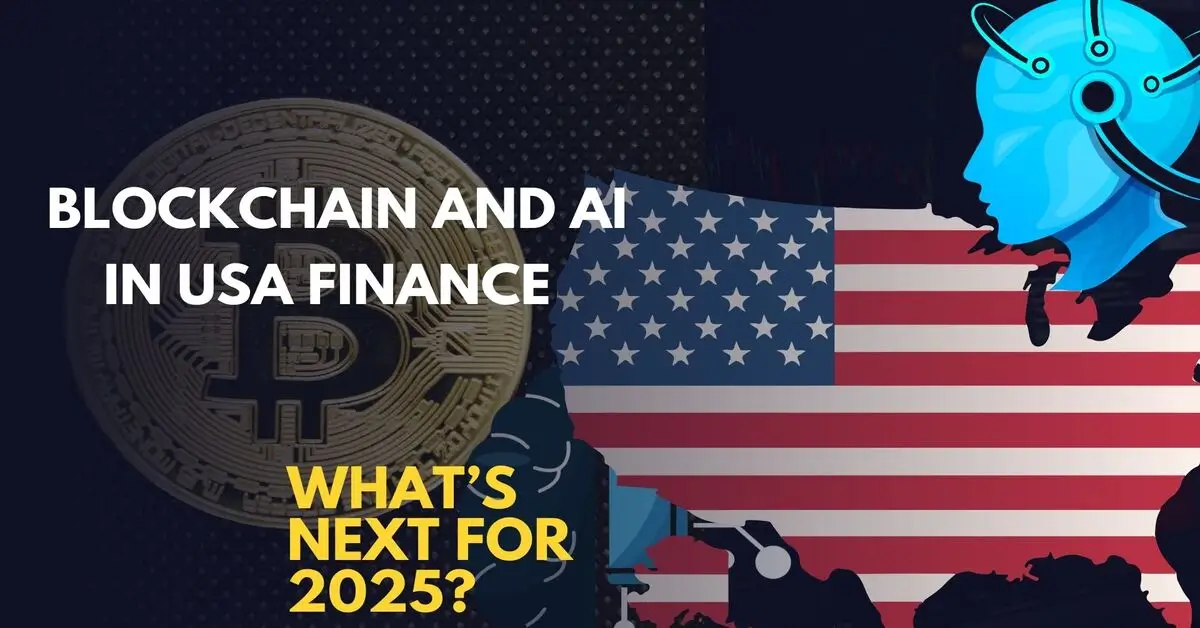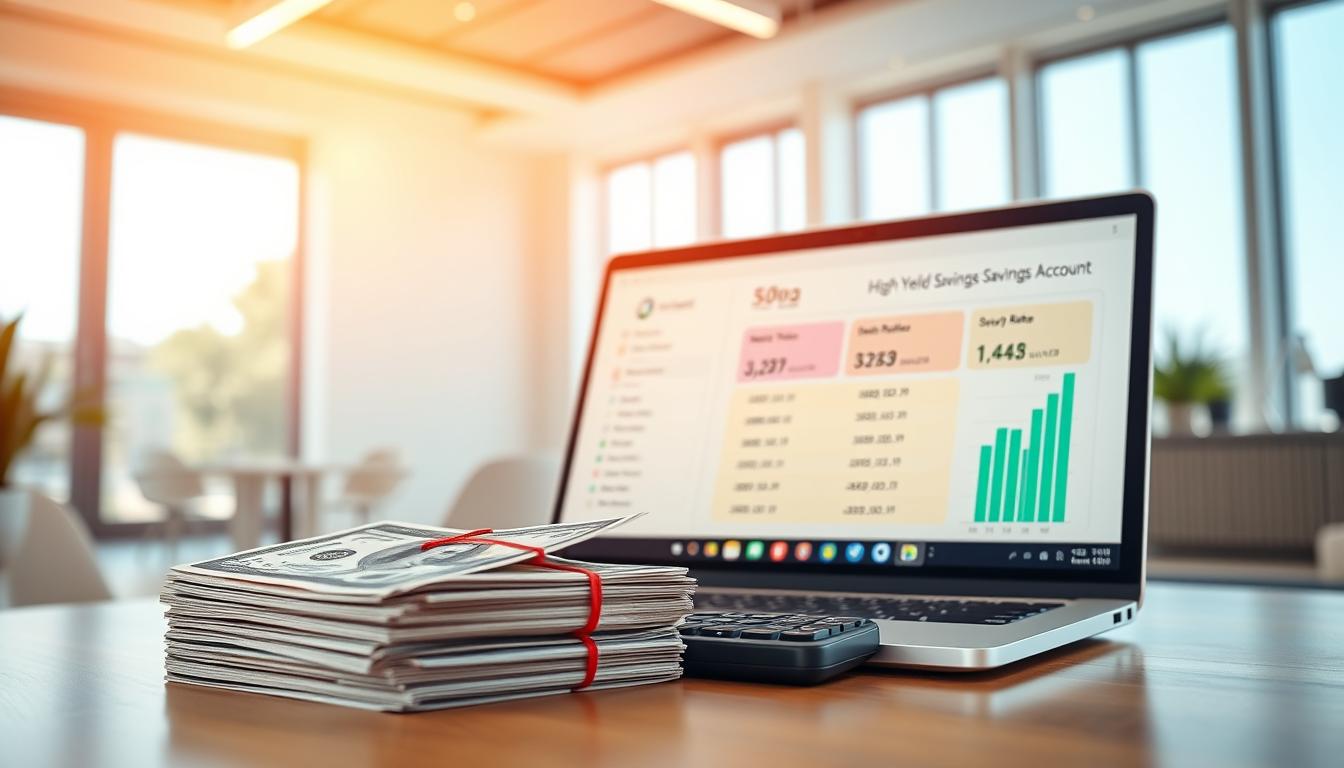Introduction
Picture this: a Wall Street trader in 2025, chilling in a sleek Manhattan penthouse, sipping artisanal coffee while AI algorithms predict market dips before they even hit X. No guesswork, no gut calls—just cold, hard data crunching at lightspeed, backed by blockchain’s bulletproof ledger. This isn’t a sci-fi flick; it’s the new heartbeat of American finance. As we roll into September 2025, blockchain in USA finance isn’t just nudging the system—it’s tearing up the playbook. From nixing billions in fraud to handing everyday investors the keys to DeFi, these tech titans are reshaping how money moves. Curious? Let’s dive into fintech trends USA and see why AI in banking 2025 is the talk of the town.
Why’s this happening now? The numbers scream it. Chainalysis’s 2025 Global Adoption Index ranks the U.S. second globally in crypto and blockchain, with institutional investments spiking 25% year-over-year. Meanwhile, Deloitte’s Q2 2025 CFO Signals survey says 68% of North American finance execs are all-in on AI, from sniffing out risks to crafting bespoke customer experiences. Forget hype—this is a full-on financial revolution. Old-school banks, once crypto skeptics, are now duking it out with fintech startups to own this space. What’s fueling the fire? Post-COVID digital hunger, friendlier regs, and a Silicon Valley talent boom. Buckle up as we unpack how blockchain in USA finance, AI trading algorithms, and the future of DeFi USA are rewriting the game.
The Evolution of Blockchain and AI in U.S. Finance
Blockchain in USA finance kicked off with a bang in 2008, when Bitcoin’s whitepaper dropped like a Molotov cocktail during the financial crisis. It screamed, “Trust no one!”—and Americans listened. But it took a decade for blockchain to graduate from crypto chaos to boardroom darling. By 2015, Nasdaq was testing private blockchains for stock trades, proving you could move real assets without middlemen. Then 2020 hit, and the pandemic lit a fire under digital everything. Suddenly, fast, cheap transactions weren’t nice-to-haves—they were must-haves. By 2023, JPMorgan’s Onyx platform was churning through $1 trillion daily, quietly revolutionizing payments.
AI’s got a longer rap sheet, stretching back to the 1950s with clunky neural nets. It snoozed until the 2010s data boom woke it up. Wall Street caught on early, with firms like Renaissance Technologies using machine learning to shave milliseconds off trades. The U.S. dropped $15 billion on financial AI by 2018, per McKinsey. The big leap? 2022, when generative AI like ChatGPT made coding optional. Banks rolled out chatbots handling 80% of customer queries—no humans needed.
Early Days: From Bitcoin to Bank Buy-In
U.S. banks didn’t exactly roll out the red carpet for blockchain. The 2017 ICO bubble? A regulatory dumpster fire. But players like Bank of America were sneaky, filing 100+ blockchain patents by 2019. AI had an easier ride—Wells Fargo’s fraud detection slashed false positives by 40% in 2016. The game-changer? The 2021 infrastructure bill gave digital assets a nod, nudging banks to experiment. Now, 90% of U.S. banks have blockchain pilots, and AI’s not far behind, per TekRevol’s 2025 stats. It’s like swapping a flip phone for an iPhone—once you’re in, there’s no going back.
Fintech’s Meteoric Rise
Fintech’s the cool kid shaking things up. Startups like Ripple (zapping cross-border payments) and Plaid (AI-powered data crunching) are bridging old money and new tech. Venture capital’s all over it—$32 billion poured into U.S. fintech in 2024, per KPMG, with AI-blockchain combos stealing the show. By 2025, it’s a full-on ecosystem. Picture Robinhood’s AI-driven trades on blockchain rails. As fintech guru Sarah Chen says, “We’re not digitizing finance; we’re rebuilding trust from scratch.” Innovation’s not a buzzword—it’s the new normal.
Real-World Game-Changers
Imagine fraudsters slamming into a digital fortress, trades zipping across borders in seconds, and compliance forms filling themselves out. That’s blockchain in USA finance and AI at work. With $100 trillion sloshing through U.S. markets yearly, these tools are cutting fat and boosting speed. Let’s break it down.
Fraud Detection: The AI-Blockchain Shield
Fraud’s a $5.8 billion gut-punch to U.S. banks annually, but AI’s rewriting the story. Machine learning spots fishy transactions in real-time with 95% accuracy—up from 70% a decade ago, per Morningstar’s 2025 report. Add blockchain’s tamper-proof logs, and you’ve got an audit trail tighter than Fort Knox. Citigroup’s AI-blockchain pilot slashed wire fraud by 60%. It’s like a 24/7 watchdog that never blinks.
AI Trading Algorithms: Wall Street’s New Edge
AI trading algorithms are the rockstars of 2025 markets. They scarf down news, X posts, and historical data to predict trades faster than you can say “bull market.” McKinsey says 75% of U.S. equity trades lean on AI, boosting hedge fund returns by 15-20%. Goldman Sachs’ Marcus platform uses them for robo-advisors, pairing AI with blockchain-verified assets. Too much power? Maybe. But the profits are hard to argue with.
DeFi: The Future of DeFi USA
DeFi’s where blockchain flexes hardest, cutting out banks for peer-to-peer loans and juicy yields. U.S. DeFi’s total value locked (TVL) hit $123.6 billion in 2025, up 41% from last year, per Coinlaw. Platforms like Aave dangle 8-12% APYs on stablecoins, luring folks tired of 0.5% savings accounts. AI juices it up with algorithms picking the best yield pools. Forbes calls 2025 America’s DeFi glow-up: from fringe to future of DeFi USA. Regulated, but ready to roll.
Cross-Border Payments: Faster, Cheaper, Better
Global payments bleed $120 billion in fees yearly. Blockchain says, “Hold my beer.” RippleNet slashes transfer times from days to seconds, costs by 40%. AI predicts currency swings, optimizing routes. PayPal’s PYUSD stablecoin, running on blockchain, moves $10 billion monthly. It’s like upgrading from snail mail to instant messaging—game over, old school.
Compliance Automation: Taming the Reg Beast
KYC and AML used to be soul-crushing. Now? AI scans IDs with 99% accuracy, while blockchain logs every move immutably. HSBC’s automating 70% of filings, saving millions. As a Deloitte exec put it, “Compliance isn’t a cost anymore—it’s a superpower.”
U.S. Titans Leading the Charge
The big dogs are all in. JPMorgan Chase, with $4 trillion in assets, runs Kinexys, a blockchain beast settling $2 trillion daily. Its AI fraud tools saved $1.5 billion in 2025. CEO Jamie Dimon, once a crypto hater, now raves about 450 AI use cases, from loans to wealth advice. “AI’s our co-pilot,” he told the 2025 Investor Day crowd.
Goldman Sachs is no slouch. Their GS AI suite drives AI trading algorithms for Marcus Invest, managing $50 billion with blockchain tokens. They’ve tokenized $500 million in DeFi, blending old money with new yields. PayPal’s AI fraud detection, paired with blockchain for Venmo’s crypto wallet, catches 99% of scams across 400 million monthly transactions. Even SoFi’s in the game, using AI and blockchain to approve loans 30% faster. These giants aren’t just playing—they’re building the future of blockchain in USA finance.
USA vs. the World: Who’s Winning?
The U.S. is a heavyweight, but not undisputed champ. Chainalysis’s 2025 index puts America second to India, with 22% crypto ownership (up from 20%). Europe’s GDPR-friendly regs keep it steady; Singapore’s 28% adoption edges out U.S. fintech hubs. China’s crypto-ban lags, but it’s an AI patent powerhouse.
Global DeFi TVL is $200 billion, with Asia at 45% and the U.S. at 25%—but America’s institutional growth is unmatched. Why? $50 billion in AI-finance startup funding vs. Europe’s $30 billion. Still, places like the UAE zip ahead with blockchain sandboxes. BCG’s 2025 take? “U.S. has depth, but agility wins races.” America’s playing both cards.
Regulatory Rollercoaster
Regs are the wild card in blockchain in USA finance. The SEC’s 2025 Crypto Task Force flipped from crackdowns to frameworks, eyeing “innovation exemptions” for non-security tokens, per Reuters. The Fed’s Project Hamilton tests blockchain CBDCs, aiming for 2027. The GENIUS Act demands 20 rulemakings by October 2025, balancing AML with growth. CFTC’s “crypto sprint” greenlights derivatives.
But it’s not all smooth sailing. Ex-SEC exec Michael Piwowar warns, “Crypto and AI will own 2025 regs—adapt or eat dust.” It’s a high-stakes dance: innovate, but don’t crash.
Pros and Cons of Blockchain + AI
| Pros | Cons |
|---|---|
| Lightning-fast efficiency: Blockchain settles trades instantly; AI personalizes at scale. | Integration pains: Legacy systems fight new tech, spiking costs 20-30%. |
| Huge savings: PwC says banks save $20 billion yearly. | Scalability hiccups: Ethereum chokes during peak loads. |
| Inclusive access: DeFi opens doors for unbanked Americans. | Job shifts: AI automates 30% of back-office roles. |
| Ironclad transparency: Blockchain builds trust like nothing else. | Learning curve: Reskilling workers is a must. |
The verdict? The pros scream “go!”—but don’t ignore the fine print.
Risks and Roadblocks
Cyberattacks are the boogeyman—quantum hacks could crack blockchain by 2030. AI lending biases? Already sparking lawsuits. Ethical minefields? Who owns the data in AI models trained on your trades? Regs lag, risking a Wild West vibe. Forbes’ Romy Khan nails it: “2025’s gold rush needs a sheriff.” Fixes? Rigorous audits, ethical AI rules. The road’s bumpy, but navigable.
What’s Next for Blockchain in USA Finance?
By December 2025, Morgan Stanley predicts AI-blockchain hybrids will power 40% of U.S. trades. AI in banking 2025 means hyper-tailored services—think AI advisors haggling loans in real-time. Blockchain will tokenize $10 trillion in assets globally, with the U.S. leading in real estate and bonds.
Looking to 2030? CBDC-DeFi mashups and AI-run smart contracts. Devoteam says 80% of banks will be AI-immersed by 2027. The future of DeFi USA? Wall Street-grade yields, regulated for safety. Sam Altman’s take on AI? “Frothy, but rock-solid.” U.S. finance is set to soar—smarter, faster, bolder.
FAQs
How is AI used in banking in the USA?
AI’s the Swiss Army knife of banking—chatbots handle queries, analytics greenlight loans, and fraud detection hits 95% accuracy. It’s saving banks 25% on costs in 2025.
What is the future of blockchain in U.S. finance?
Tokenized assets will hit trillions by 2030, streamlining payments and compliance. Fed-backed pilots will make blockchain in USA finance as common as debit cards.
Can AI and blockchain work together in trading?
Heck yeah—AI predicts trades, blockchain secures them. Goldman’s seeing 20% efficiency boosts already.
Is DeFi safe for U.S. investors?
SEC oversight’s tightening, but smart contract bugs linger. Stick to vetted platforms; $123B TVL shows DeFi’s growing up—diversify smartly.
What are key fintech trends USA for 2025?
Embedded finance, AI reasoning, and DeFi tokenization are hot, per Posh AI, fueling a $231B market by 2030.
Conclusion: The Future Is Now
In 2025, blockchain and AI aren’t just gadgets—they’re the maestros of U.S. finance’s epic symphony. From JPMorgan’s trillion-dollar ledgers to DeFi’s open-door yields, the impact’s electric: faster markets, fairer access, cutthroat competition. The opportunities? Endless—for startups, investors, and everyday Joes. Sure, risks lurk, but the bold always win. So, what’s your move? In this brave new financial world, standing still is the only misstep. America’s money game is calling—jump in!







